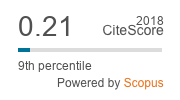The differential outcomes effect using sensory outcomes in a many-to-one matching-to-sample task
Résumé
The present study was designed to examine the use of sensory outcomes (visual vs. auditory) using a differential outcomes procedure to facilitate learning in a many-to-one matching-to-sample task. For one group of participants (differential outcomes) each correct stimulus-choice sequence was always followed by a different outcome; whereas for the rest of participants (non-differential outcomes) each correct sequence was followed by the same outcome. Participants trained with differential outcomes showed a faster acquisition and higher overall accuracy than participants trained with non-differential outcomes. The results provide a new extension the differential outcomes effect by using sensory outcomes and many-to-one matching to-sample task; applications of the differential outcomes procedure are discussed.
Téléchargements
Références
Arntzen, E., & Nikolaisen, S.L. (2011). Establishing equivalence classes in children using familiar and abstract stimuli and many-to-one and one-to-many training structures. European Journal of Behavior Analysis, 12, 105-120.
Dube, W.V., McIlvane, W.J., Maguire, R.W., Mackay, H.A., & Stoddard, L.T. (1989). Stimulus class formation and stimulus-reinforcer relations. Journal of the Experimental Analysis of Behavior, 51, 66-76. doi:10.1901/jeab.1989.51-65
Easton, A., Child, S., & López-Crespo, G. (2011). Differential outcomes aid the formation of categorical relationships between stimuli. Behavioural Brain Research, 222, 270-273. doi:10.1016/j.bbr.2011.03.036
Esteban, L., Plaza, V., López-Crespo, G., Vivas, A.B., & Estévez, A.F. (2014). Differential outcomes training improves face recognition memory in children and in adults with Down syndrome. Research in Developmental Disabilities, 35, 1384-1392. doi:10.1016/j.ridd.2014.03.031
Estévez, A.F., Fuentes, L.J., Marí-Beffa, P., González, C., & Álvarez, D. (2001). The differential outcome effect as a useful tool to improve conditional discrimination learning in children. Learning and Motivation, 32, 48-64. doi:10.1006/lmot.2000.1060
Estévez, A.F., Vivas, A.B., Alonso, D., Marí-Beffa, P., Fuentes, L.J., & Overmier, J.B. (2007). Enhancing challenged students recognition of mathematical relations through differential outcomes training. The Quarterly Journal of Experimental Psychology, 60, 571-580. doi:10.1080/17470210600820039
Fedorchak, P.M., & Bolles, R.C. (1986). Differential outcome effect using a biologically neutral outcome difference. Journal of Experimental Psychology: Animal Behavior Processes, 12, 125-130. doi:10.1037/0097-7403.12.2.125
Friedman, G.J., & Carlson, J.G. (1973). Effects of a stimulus correlated with positive reinforcement upon discrimination learning. Journal of Experimental Psychology, 97, 81-286. doi:10.1037/h0034123
Goeters, S., Blakely, E., & Poling, A. (1992). The differential outcomes effect. The Psychological Record, 42, 389-411.
Goyos, C. (2000). Equivalence class formation via common reinforcers among preschool children. The Psychological Record, 50, 629-654. doi:10.1007/BF03395375
Hochhalter, A.K, Sweeney, W. A., Savage, L.M., Bakke, B.L., & Overmier, J.B. (2001). Using animal models to address the memory deficits of Wernicke-Korsakoff syndrome. En M. E. Carroll & J.B. Overmier (Eds.), Animal Research and human health. (pp. 281-292). Washington: American Psychological Association.
Holden, J.M., & Overmier, J.B. (2014). Performance under differential outcomes: contributions of reward-specific expectancies. Learning and Motivation, 45, 1-14. doi:10.1016/j.lmot.2013.09.001
Kelly. R., & Grant, D.S. (2001). A differential outcomes effect using biologically neutral outcomes in delayed matching-to-sample with pigeons. The Quarterly Journal of Experimental Psychology, 54, 69-79.
López-Crespo, G., Plaza, V., Fuentes, L.J., & Estevez, A.F. (2009). Improvement of age-related memory deficits by differential outcomes. International Psychogeriatrics, 21, 503-510. doi:10.1017/S1041610209008576
Maki, P., Overmier, J.B., Delos, S., & Gutmann, A.J. (1995). Expectancies as factors influencing conditional discrimination performance of children. The Psychological Record, 45, 45-71.
Martella, D., Plaza, V., Estévez, A.F., Castillo, A. & Fuentes, L.J. (2012). Minimizing sleep deprivation effects in healthy adults by differential outcomes. Acta Psychologica, 139, 391-396. doi:10.1016/j.actpsy.2011.12.013
Mateos, L.R., & Flores, C. (2016). The differential outcomes effect: a case of translational research. Universitas Psychologica, 15, 51-60. doi:10.11144/Javeriana.upsy15-2.ecdc
Mateos, L.R., Madrigal, K., Flores, C., & Overmier, J.B. (2016). The effects of differential outcomes on learning and memory in young and aged rats. Learning and Motivation, 53, 1-6. doi:10.1016/j.lmot.2015.10.004
Miller, O., Waugh, K, & Chambers, K. (2002). Differential outcomes effect: Increased accuracy in adults learning Kanji with stimulus specific rewards. The Psychological Record, 52, 315-324.
Minster, S.T., Jones, M., Ellife, D., & Mathukumaraswamy, S.D. (2006). Stimulus equivalence: Testing Sidman´s (2000) theory. Journal of the Experimental Analysis of Behavior, 85, 371-391. doi:10.1901/jeab.2006.15-05
Mok, L.W., & Overmier, J.B. (2007). The differential outcomes effect in normal human adults using a concurrent-task within-subject design and sensory outcomes. The Psychological Record, 57, 187-200.
Mok, L.W., Estevez, A.F., & Overmier, J.B. (2010). Unique outcome expectations as a training and pedagogical tool. The Psychological Record, 60, 227-248.
Plaza, V., Antúnez, C., Estévez, A.F., López-Crespo, G., & Fuentes, L.J. (2012). Improving delayed face recognition in Alzheimer`s disease by differential outcomes. Neuropsychology, 4, 482-489. doi:10.1037/a0028485
Savage, L.M., Pitkin, S.R., & Careri, J.M. (1999). Memory enhancement in aged rats: the differential outcomes effect. Developmental Psychobiology, 35, 318-327. doi:10.1002/(SICI)1098-2302(199912)35:4<318::AID-DEV6>3.0.CO;2-8
Schenk, J.L. (1994). Emergent relations of equivalence generated by outcome-specific consequences in conditional discrimination. The Psychological Record, 44, 537-558.
Smeets, P.M., & Barnes-Holmes, D. (2005). Establishing equivalence classes in preschool children with one-to-many and many-to-one training protocols. Behavioural Processes, 69, 281-293. doi:10.1016/j.beproc.2004.12.009
Smeets, P.M., Barnes-Holmes, D. & Roche, B. (2001). Derived stimulus-response and stimulus-stimulus relations in children and adults: assessing training order effects. Journal of Experimental Child Psychology, 78, 130-154. doi:10.1006/jecp.2000.2563
Sidman, M. (2000). Equivalence relations and the reinforcement contingency. Journal of the Experimental Analysis of Behavior, 74, 127-146. doi:10.1901/jeab.2000.74-127
Sidman, M., & Tailby, W. (1982). Conditional discrimination vs. matching to sample: An expansion of the testing paradigm. Journal of the Experimental Analysis of Behavior, 37, 5-22. doi:10.1901/jeab.1982.37-5
Trapold, M.A. (1970). Are expectancies based upon different positive reinforcing events discriminably different? Learning and Motivation, 1, 129-140. doi:10.1016/0023-9690(70)90079-2
Trapold, M.A., & Overmier, J.B. (1972). The secondary learning process in instrumental learning. In A. H. Black & W.F. Prokasy (Eds.), Classical conditioning: Vol 2. Current Research and Theory. New York: Appleton.
Urcuioli, P.J. (2005). Behavioral and associative effects of differential outcomes in discrimination learning. Learning and Behavior, 33, 1-21. doi:10.3758/BF03196047



